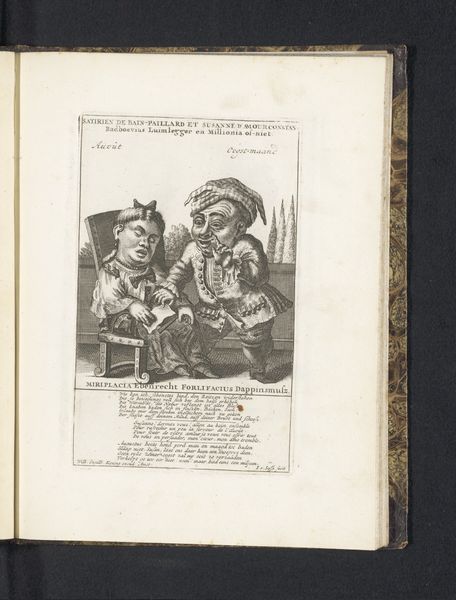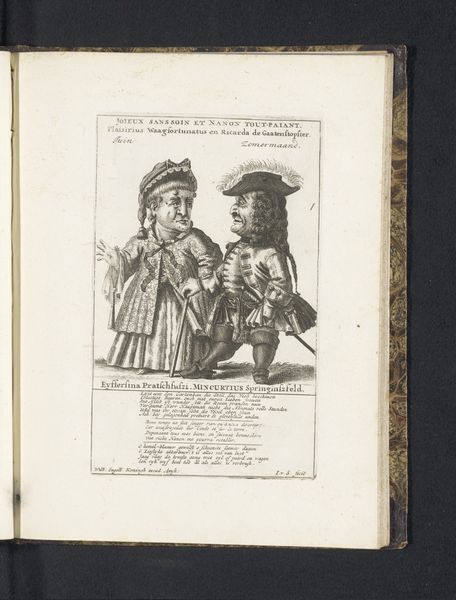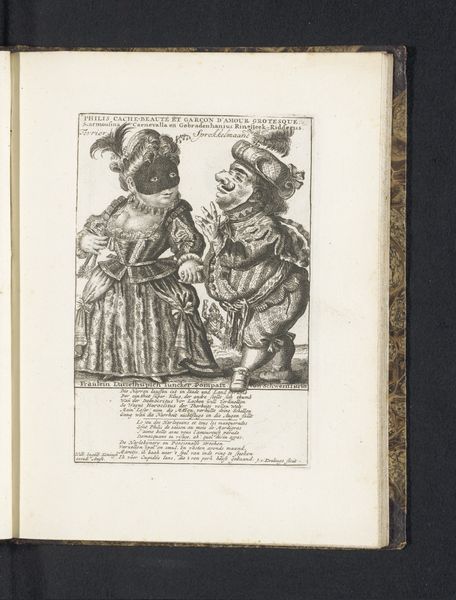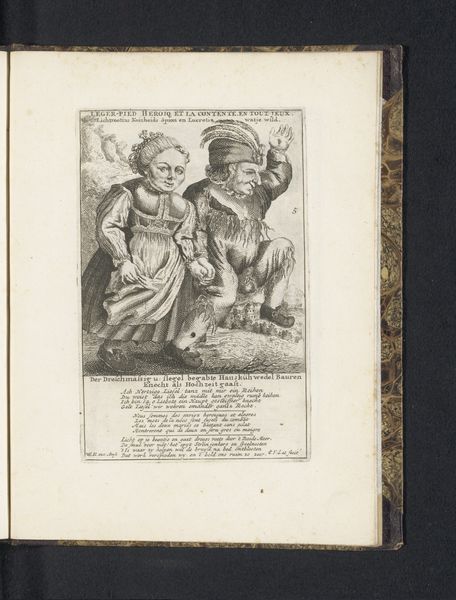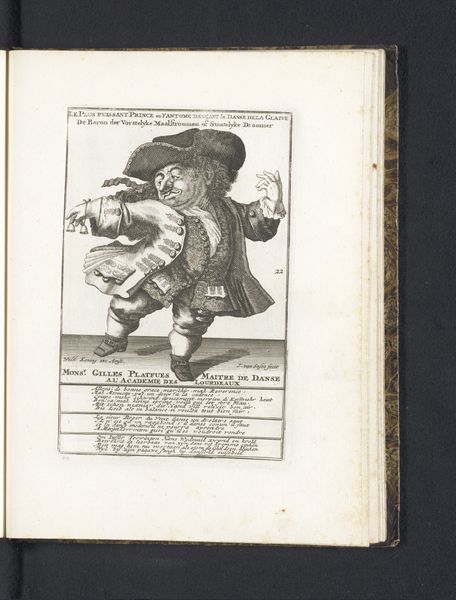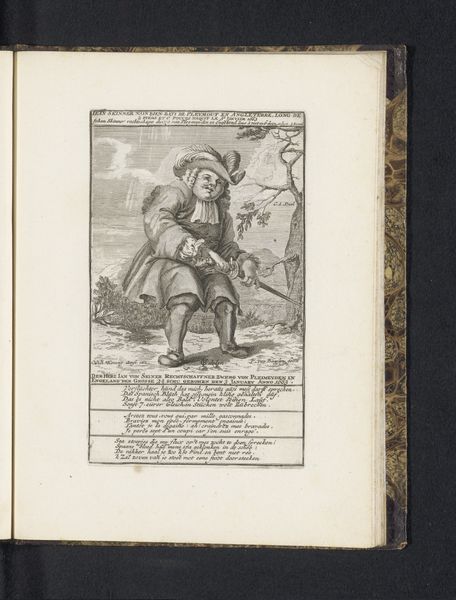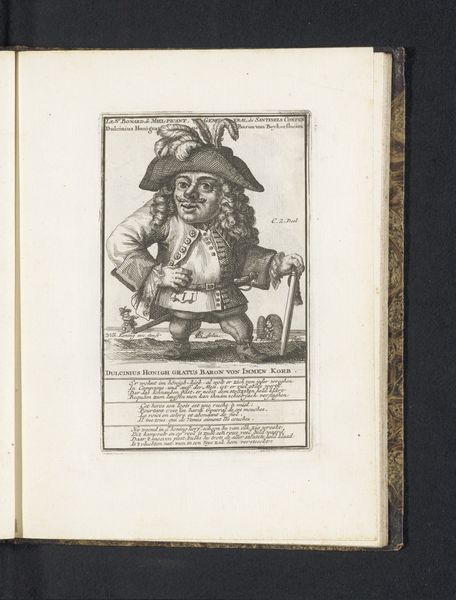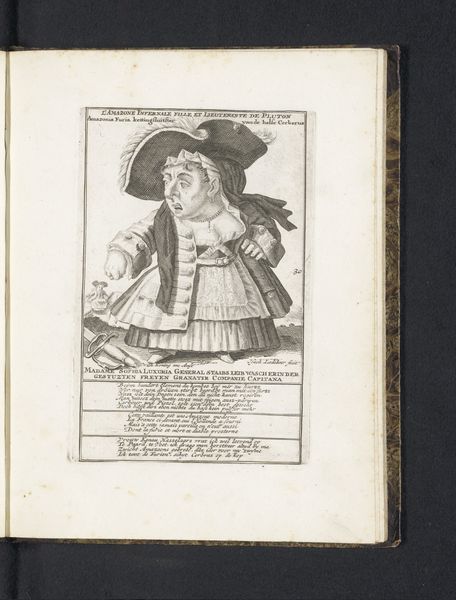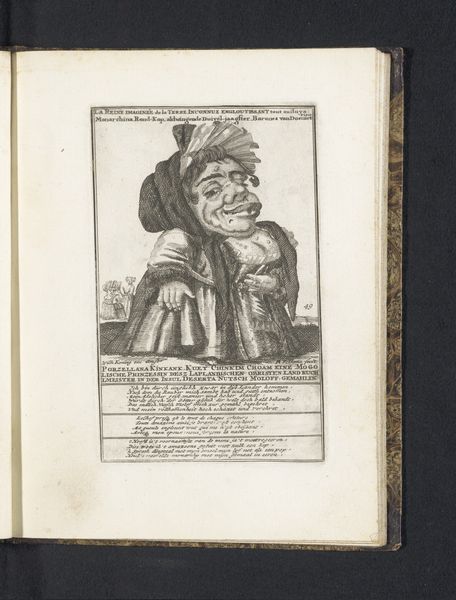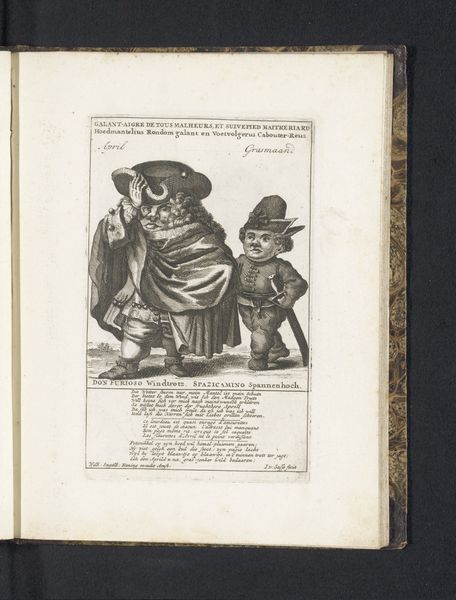
#
aged paper
#
old engraving style
#
sketch book
#
personal journal design
#
personal sketchbook
#
pen and pencil
#
pen work
#
sketchbook drawing
#
storyboard and sketchbook work
#
sketchbook art
Dimensions: height 165 mm, width 110 mm, height 227 mm, width 170 mm
Copyright: Rijks Museum: Open Domain
Curator: This delicate engraving is called "Twee dwergen voor de maand september," which translates to "Two Dwarves for the Month of September." It was created by Joost van Sassen sometime between 1718 and 1720. Editor: It's unsettling, honestly. The figures seem... off. Their expressions are exaggerated, and their bodies are so disproportionate. Curator: Indeed. Consider the date it was made. Exaggerated features were common then. They might reflect societal anxieties or prevailing artistic conventions about representing commoners. The male figure, bearing branches and a basket, carries signs of harvest. He seems like an allegory for September's bounty, but his eyes tell a different story. Editor: There's almost a mournful quality to their appearance, contrasting sharply with the more theatrical elements like their dress and the rather flamboyant wig on the female figure. I also notice the inscription with the title: are the "dwarves" stand-ins for actual social figures, or even stand-ins for royalty being satirized? Curator: It’s a good question. This was an age of satire through caricatures. We also see a specific set of symbolic objects—a basket brimming with goods alluding to autumnal prosperity, the female with what appear to be finches perhaps signifying love during this time, or simply being representative of trade. All the while bearing faces with expressions of exhaustion. They hint at a more profound statement about labor and the burdens it places on individuals, rendered as permanent markers within the autumnal harvest. Editor: So perhaps this piece captures not only September's symbolic meaning, the turning seasons, but also something about class distinctions and labor within 18th-century society? Even more striking, considering the historic labor put towards harvest itself during that period. Curator: Precisely. This little tableau might be telling us volumes about social relations and perhaps critiquing their uneven distribution. It's these contrasts in expression and imagery which speaks to a wider understanding of cultural context, psychology, and history during the work’s genesis. Editor: Absolutely. By interrogating both the figures' representation and the piece’s relationship with the broader history that conceived of it, "Two Dwarves" presents far more than just a simple depiction of the season of September.
Comments
No comments
Be the first to comment and join the conversation on the ultimate creative platform.
